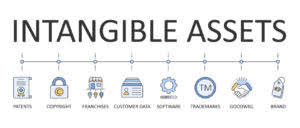
For example, if a company buys a machine for $10,000 with a useful life of 5 years and no salvage value, the annual depreciation would be $2,000. At Asset Infinity Store, we understand the importance of effective asset management for businesses of all sizes. That’s why we offer a wide range of hardware solutions to help streamline your asset management process.
Depreciation in Accounting
- It’s also crucial for tax purposes—it can offer deductions that reduce taxable income, and failing to account for it properly can lead to noncompliance penalties.
- After this production is achieved, the asset has a residual value of £30,000.
- Accountants use the straight line depreciation method because it is the easiest to compute and can be applied to all long-term assets.
- For example, a building in an excellent location may be increasing in value even though the accumulated depreciation is increasing and therefore the book value is decreasing.
- At the end of three years the truck’s book value will be $40,000 ($70,000 minus $30,000).
- In the units-of-activity method, the accounting period’s depreciation expense is not a function of the passage of time.
This method helps you match definition of accumulated depreciation depreciation with actual wear and tear, making financial reporting more precise. It also benefits businesses with changing production levels since depreciation expenses adjust accordingly. Industries like manufacturing, mining, and transportation often use this approach to track the value of an asset more accurately.
Is Accumulated Depreciation an Asset or a Liability?

However, if a company’s depreciable assets are used in a manufacturing process, the depreciation of the manufacturing assets will not be reported directly on the income statement as depreciation expense. Instead, this depreciation will be initially recorded as part of manufacturing overhead, which is then allocated (assigned) to the goods that were manufactured. The combination of an asset account’s debit balance and its related contra asset account’s credit balance is the asset’s book value or carrying value.
What is the Role of Accumulated Depreciation in Financial Statements?
- Asset Infinity’s depreciation reports help in planning and forecasting cash requirements more accurately.
- Instead, the credit is entered in the contra asset account Accumulated Depreciation.
- This is an owner’s equity account and as such you would expect a credit balance.
- It divides the asset’s depreciable base (cost minus salvage value) evenly across its useful life and assumes that its value declines steadily over time.
- At the end of the first year, Leo would record depreciation expense of $2,000 by debiting the expense account and crediting the accumulated depreciation account.
There are several methods to calculate depreciation, but one of the most commonly used is the straight line depreciation method, where the asset loses an equal amount of value each year over its useful life. Deciding on the right depreciation method for your assets can be as strategic as contra asset account choosing the right chess move. Each method, such as the straight-line formula which applies a constant depreciation rate over the useful life of an asset, distributes the cost of an asset in distinct ways across its useful life. This rate, known as the straight-line rate, is simple to compute – for instance, if a computer’s lifespan is six years, the rate would be approximately 16.67% per year. Accumulated depreciation is an important component of a business’s comprehensive financial plan.
Q. Is accumulated depreciation an asset or a liability?

To introduce the concept of the units-of-activity method, let’s assume that a service business purchases unique equipment at a cost of $20,000. Over the equipment’s useful life, the business estimates that the equipment will produce 5,000 valuable items. Assuming there is no salvage value for the equipment, the business will report $4 ($20,000/5,000 items) of depreciation expense for each item produced. If 80 items were https://www.bookstime.com/articles/free-accounting-software produced during the first month of the equipment’s use, the depreciation expense for the month will be $320 (80 items X $4).

Investors and lenders look at accumulated depreciation to understand a company’s financial position. A high accumulated depreciation balance may mean you are using older assets that could need replacement soon. It’s important to note that total depreciation expense is the same, regardless of the depreciation method you choose. Accumulated depreciation helps you track asset wear and tear, plan for replacements, and stay compliant with tax rules.

Sum-of-the-years’-digits method
The most popular, known as the straight-line method, divides the cost evenly over the years. Picture a beautiful, even staircase descending towards the asset’s salvage value—that’s straight-line for you. But if you want to front-load your expense recognition, you might choose an accelerated method. The double-declining balance is an option that, with a rate twice that of the straight-line formula, rapidly reduces the carrying amount of the asset.
What is an example of depreciation and how does it impact the financial statements

Accumulated depreciation plays a critical role in financial reporting by reflecting the reduction in value of fixed assets over time. This helps businesses and stakeholders understand the asset’s remaining useful life, current value, and contribution to operations. Accumulated depreciation is a cornerstone of accounting for fixed assets, ensuring that their costs are allocated over their useful lives. This approach aligns with the matching principle, which matches expenses to the revenues they help generate, providing a more accurate picture of financial performance. Unlike regular depreciation, which is reported on the income statement as an expense, accumulated depreciation appears on the balance sheet as a contra-asset account. This means it reduces the book value of an asset but does not directly impact cash flow.
Thus, accumulated depreciation is an aggregation of individual depreciation expenses over time. Choosing the most suitable depreciation method is essential, as it impacts the timing and amount of depreciation charges and, ultimately, the financial statements. The accelerated depreciation method, such as the double-declining balance, allows for higher depreciation earlier than the straight-line method.
